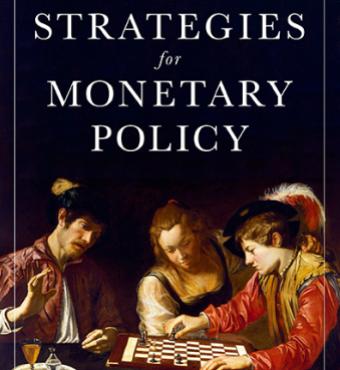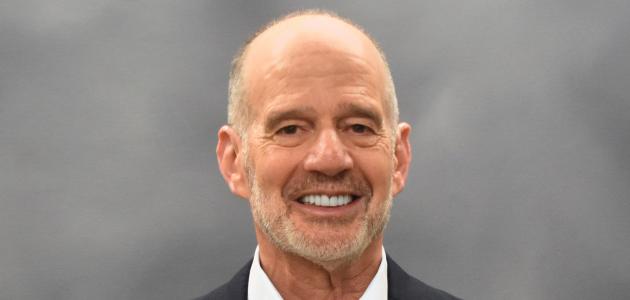by Jonathan Movroydis
In this interview, John B. Taylor and John H. Cochrane discuss Strategies for Monetary Policy, a compilation of essays drawn from the 2019 Monetary Policy Conference at the Hoover Institution.
The two senior Hoover economists also talk about current monetary policy in the context of the COVID-19 crisis, and the tools the central bank should use in order to help stimulate and stabilize the American economy.
What are the origins of the Hoover Monetary Policy Conference?
John B. Taylor: Following the global financial crisis of 2007–08, we felt that there needed to be a serious discussion about monetary policy outside of central banks. Such a discussion, we believed, should include central bankers but also academics, researchers, and, more generally, people who work in the financial sector. We believe that the conference shouldn’t be limited to discussions, but it also should be a forum for constructive criticism.
John H. Cochrane: There are academic conferences where economists get together and talk about papers full of equations and models. There are also central bank conferences where people get together to talk about details of policy. And there are market-oriented conferences where people think about the fluctuation of interest rates, and what it means for trading and investing.
The goal of the annual Hoover conference is to bring these three communities together, and to step back from the daily grind and reflect on the bigger-picture and long-term strategies for monetary policy and the economy.
What were the main takeaways from the May 2019 conference?
Taylor: The theme of the conference was the review of strategy, tools, and communications practices that the Federal Reserve had announced in November 2018. Many of the papers submitted by participants addressed these subjects.
John Cochrane, Volker Weiland, and I wrote a paper that discussed the Fed’s monetary policy report and newly announced rules and strategies. Other papers evaluated some of the tools, including James D. Hamilton’s criticism of quantitative easing.
The piece by Andrew Lilley and Kenneth Rogoff was about negative interest rates. Thomas Mertens and John Williams assessed the use of rules in unusual circumstances. As a result of COVID-19, it turned out we did have an economic crisis.
Cochrane: The Fed’s policy review is remarkable. I credit John Taylor’s long advocacy for thoughtful rules and strategies to guide monetary policy, as well perhaps some of our earlier conferences, which struck the same note. So the Fed is asking, “What should our overall strategy be? What are the rules of the game? How do we run monetary policy? What are we going to do next time there is a recession?” The Fed, to its credit, undertook a profound internal discussion about these issues. This is what this strategic review was all about. Other central banks saw this happening and said, "Hey, that's a good idea. Why are we just shooting from the hip? Let's listen to John Taylor and really look into developing a strategy.”
The Fed ran quite a few internal conferences in this review. But it seemed to us that it would be really useful to have a conference that isn't run by a central bank and one where people can be a little more critical of central bank consensus.
Strategy in monetary policy often involves “rules,” which are guidelines that set the parameters for interest rates. “Tools” include management of the discount rate, reserve requirements, open-market operations, and interest on reserves. There are also novel ideas that were discovered during the 2007–08 financial crisis, including quantitative easing and negative interest rates. So we talked about all these issues.
A central question of the whole review is how monetary policy should be shaped if the economy went bad. It was almost like the generals talking on the eve of the outbreak of war.
Did any of the participants address a crisis of COVID-19’s magnitude?
Taylor: The Lilley-Rogoff paper advocates negative rates very explicitly. It wasn't so much that we needed negative rates at the time they wrote it, but that we would need them at some time in the future.
The Merten-Williams paper addresses the Reifschneider-Williams rule, which provides forward guidance toward a zero-interest rate during times of crisis. These are two examples of monetary policy contingency plans.
Given the economic repercussions of the COVID-19 pandemic, what do you hope to address at the next conference?
Taylor: I would say everything that's happened since March 14, 2020, when the Fed cut interest rates to zero and announced new facilities, including the unusual Main Street Lending Program. The Fed has expanded its balance sheet dramatically, even more than during the previous financial crisis. The issue that's of some note, and that I've been trying to understand more, is that this time even the monetary aggregates, like M1 and M2, have increased significantly. That didn't happen last time.
There is also a brewing debate about Fed Policy. I would say that, without taking strong positions on either side, there needs to be an evaluation of what has happened since the outbreak of COVID-19. Has Fed policy been strategic enough? In evaluating some of the programs, is Hamilton still right that asset purchases don’t make much difference? I don't know. Those are open questions.
Cochrane: One of the issues we discussed during the last conference was financial markets. Since COVID-19, the Fed has intervened in all sorts of financial markets. The Fed sees illiquidity, nonfunctioning, and price drops. All of the promises made post-2008 were swiftly broken. In 2008 the line was, “Don't worry about moral hazard, because the world is ending and we'll take care of it later.” Twelve years later, here we are with the moral hazard. For example, in 2008, the Fed bailed out money-market funds, even though they are not insured deposits. The Fed later said, “We'll never let this happen again” and passed rules, including the commitment that funds in trouble must allow net asset values to fall. Yet once trouble started, the Fed bailed out money-market funds again by buying their assets so they could maintain asset values.
A second example: for twelve years we have been discussing why big banks are unwilling to provide enough liquidity to markets. We talked about problems with regulations and whose role it is to provide that liquidity. The needed regulatory reforms were quite clear but never happened. Now, the Fed has stepped in and propped up markets for treasuries, because the big banks were unwilling to do so.
Now we really live with the moral hazard. Our policy makers have anchored expectations that the Fed is going to intervene, keep prices from falling. The Fed is also intervening in corporate bonds. It has basically said to the markets, “We’re not going to let corporate bond prices fall, so it’s okay for you to transact.” We are again in the world of private gain and socialized losses.
Another issue we discussed in the 2019 conference was how to break the cycle of expectations that the Fed set forth. I certainly think we need to raise this again. Will the Fed always keep markets from failing? Or will it try to rebuild private markets?
The Fed is now the main source of funds for corporate bonds, and it is lending directly to industry, including the airlines. A precedent has been set that in any economic downturn, the Fed will inevitably print and distribute money. That’s a brave new world. Maybe we need to have a government-run financial system. But we should certainly talk about this as a potential system, not just as a one-off policy that assumes that the world will end if action is not taken.
John Cochrane, you recently wrote that lending by the Fed may inevitably lead to spending in the long term. Why do you believe this to be the case?
Cochrane: When you hear talk about monetary policy, there is a whole lot of fuss that the Fed is just lending and the Treasury Department is taking the credit risk. However, since the Fed is buying Treasury bonds, it doesn’t really matter. We need to recognize, those of us who live outside the government, that putting forth this argument of the Fed versus the Treasury is like saying that your left pocket is spending and the right pocket is not taking any risk, because the right pocket is just lending to the left pocket. But it’s all the same thing. If the Fed loses money, the Treasury will bail out the Fed.
The Fed and Treasury are not lending money that finances new profitable investments. The money goes to pay the bills for now and in hopes that the economy will reopen, then the loan gets repaid out of the regular profits once business reopens. But at some point it’s not worth mortgaging all your future profits—the “franchise value” of the firm. Secondly, the government will want to stimulate the economy. If every company that borrowed a lot of money from the Fed and Treasury is then saying, “We can’t invest, we can’t hire more people, we can’t expand, because all of our revenues are going to paying back the government,” then the government will quickly want to forgive, extend, or otherwise cut down that debt. So, I think this will end up in much less repayment than we are thinking about right now.
This is all great subject matter for our next conference.
Taylor: I think it's important to have a rule or a strategy. Negative rates usually apply when there are gigantic declines in GDP, unemployment is high, and inflation is low.
The Fed and other central banks should consider applying a rule like the one proposed by David Reifschneider and John Williams, which is actually on the list in the Fed’s recent Monetary Policy Reports, including the one from February of this year. That rule is designed for situations where the zero bound on the interest rate binds. Accordingly, the federal fund rate stays lower for a period of time determined by the time that the zero bound applies. I agree with the application of some rule or strategy at times like this. I would advise keeping rates low for a while and gradually raising them. The Fed has been quite vague about its next steps and should be more specific about how long they plan to keep rates at zero.
However, the Fed is getting pressured from various corners, including from the president, to go negative. Though it has resisted pressure, some of the markets are showing negative.
Another potential topic of discussion at the next conference is the Treasury’s decision to back loans the Fed is making with the Exchange Stabilization Fund. That's a big deal.
We will also likely look at inflation. I think there are a lot of inflationary pressures that won’t be visible until the economy sufficiently normalizes. Again, this is the first time we've seen such an increase in money growth.
Cochrane: What does the Fed do when interest rates hit zero and it wants to do more? It could try negative rates, but that has all sorts of problems that we discussed at the 2019 conference. It could also promise to keep interest rates lower for longer. This is a classic example of a dilemma that needs a strategy. Why would people believe that promise? Does anyone believe that the Fed will go to Congress five years from now and say, “Now is the time when we normally would be raising rates, but we’re not going to do that because we promised five years ago that we would keep them lower for longer”? Good luck with that! The only way people will believe the Fed is if it has a well-articulated strategy.
I also worry about inflation as fiscal policy falls apart. As the federal government’s balance sheet expands even more, are we going to bail out state and local governments? We talked about the Fed and the Treasury taking on every company that’s about to go bankrupt. The bailout of state and local governments would be even bigger.
From an international standpoint, a German court ruled that the European Central Bank must stop buying up corporate bonds and sovereign bonds from member countries. Europe’s California and Illinois are Italy and Greece. That question of just how much central banks can bail out other sovereigns has just been raised. This crisis has just exploded in Europe, and I believe it will also happen in the United States.
In terms of a stable recovery, what actions, both in the short term and long term, do each of you think the Fed should take?
Taylor: There are other kinds of policies that I would emphasize. We should find ways to open markets through such activity as e-commerce and the deregulation of telehealth.
On the fiscal side, I would like to see a plan to reduce the national debt. On the monetary side, how is the Fed going to unwind its balance sheet and normalize its policies? I think these issues should be discussed at our next conference.
During the financial crisis of 2007–08, a lot of unusual things happened. The Fed’s balance sheet expanded a lot as it purchased treasuries, mortgage-backed securities, and other instruments. Eventually, the Fed wanted to return to more normal policies. Now, we have been set back again, and this time it’s worse and there is more uncertainty. This is not your usual recession. There are gigantic declines in employment and industrial production. However, online retail sales numbers are incredible. How did that happen?
Cochrane: I'm glad you asked this question because it betrays the conventional wisdom that it is the Fed’s job in a recession to stimulate the economy and get it back on track. I object to that. The Fed’s job is not to screw up and make matters worse. Don’t cause a financial crisis. Don’t let the banks fall to pieces. Make sure the plumbing is working. That’s hard enough.
We currently have a microeconomic recession. The Fed can print all the money it wants, but people won’t be filling airlines or crowding restaurants. This economic crisis will be long term and expensive. Demand for goods and services is changing. There is a lot of reallocation taking place in the economy.
The key to the recovery will be proper management of the micro part of the economy. This includes fixing a lot of dumb regulations and enabling people to adapt.
But we also have to worry about the debt. Modern monetary theory seems to have won the day. Money is being thrown down rat holes in Washington, DC. The pandemic could turn into a financial crisis and then a sovereign debt crisis. We have to get a handle on our debt before the crisis widens. There will be no warnings. Crises come when you're not expecting them. I agree with John Taylor, we need to get fix our fiscal house and get the federal government's finances in a position that the economy can grow out of the recession.





















